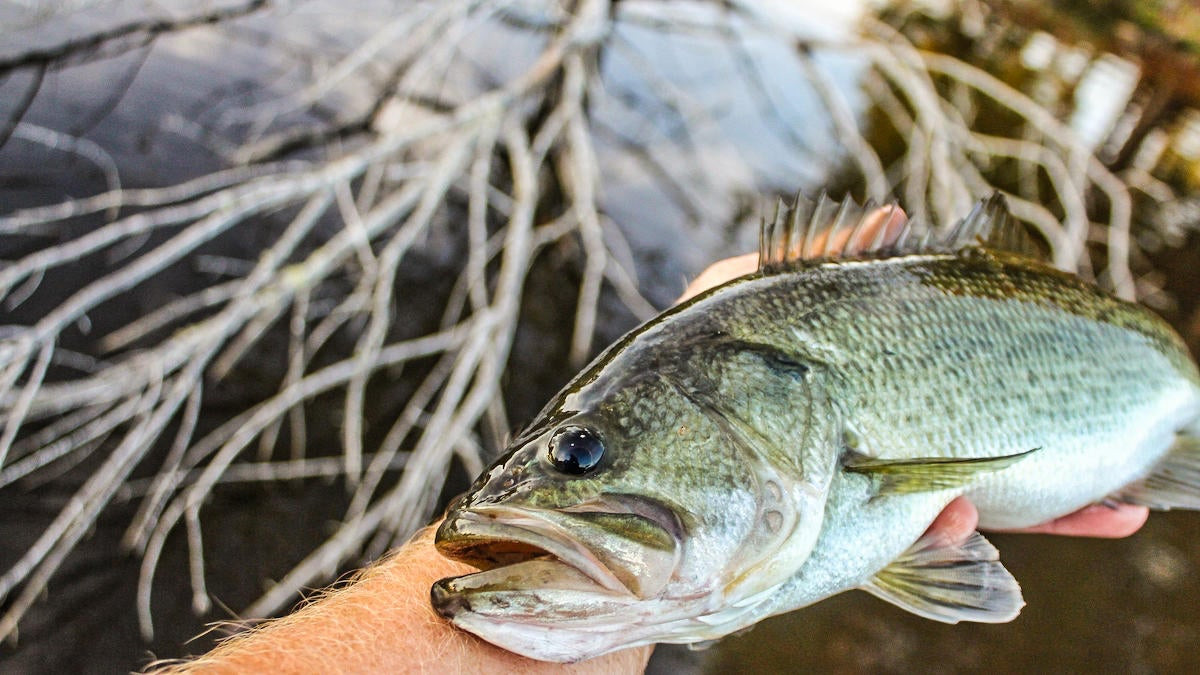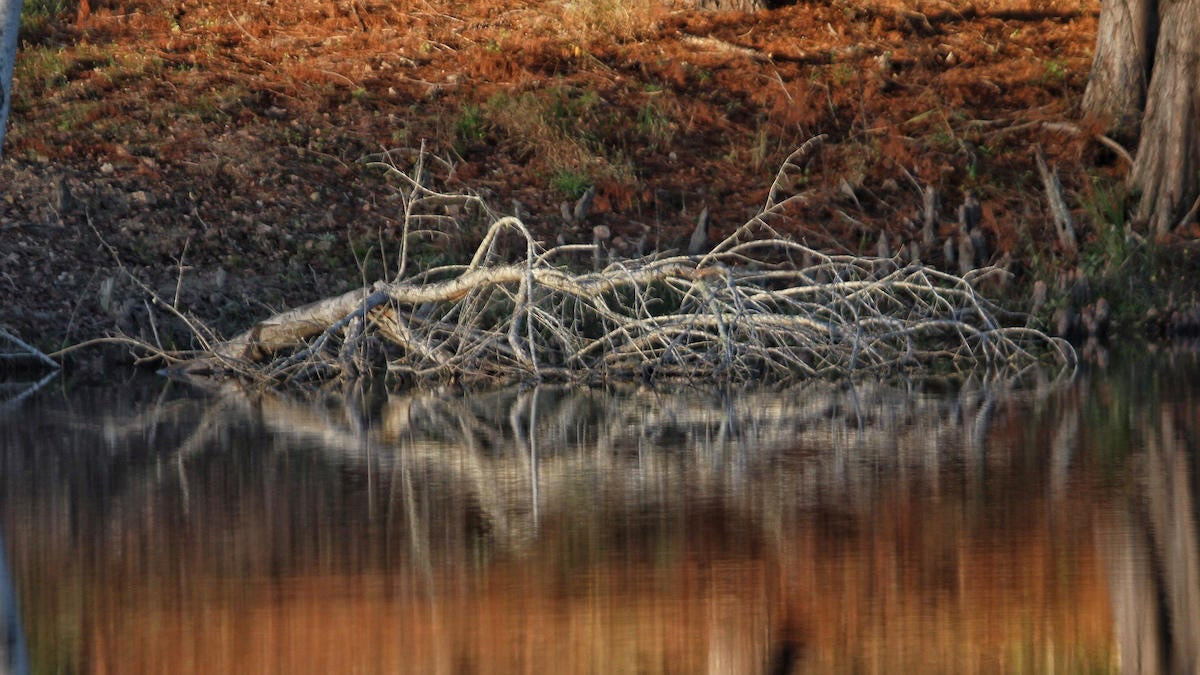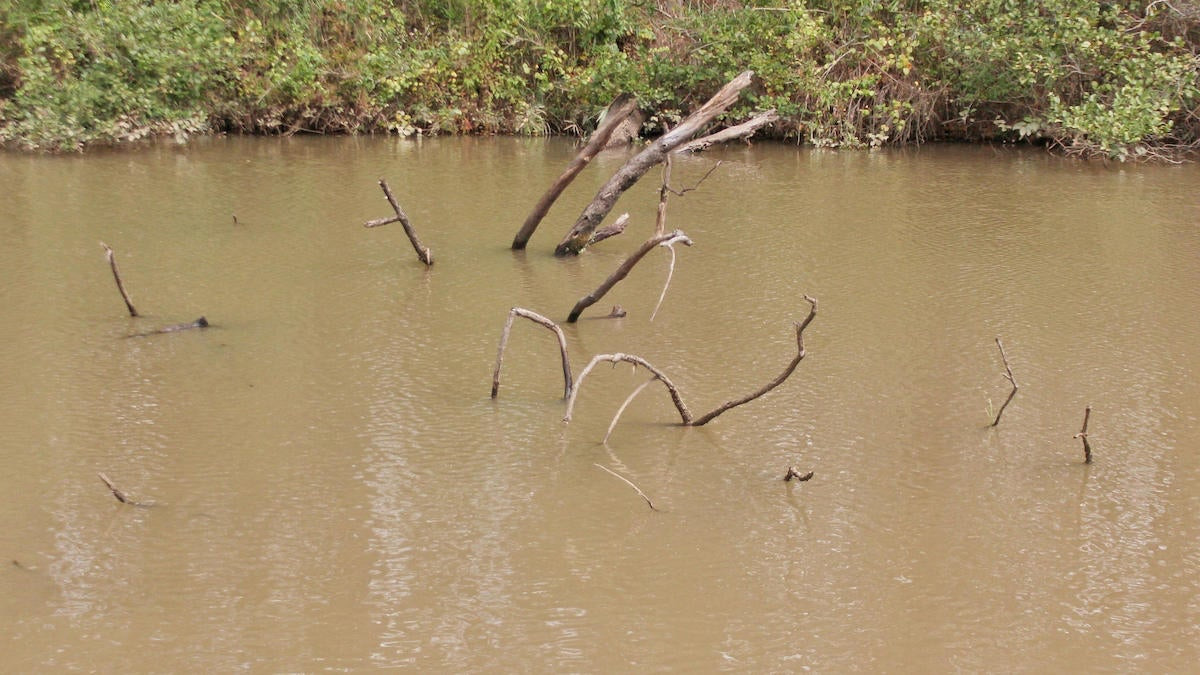At first glance, a lot of anglers might blow right by this piece thinking they know all there is to know about fishing a tree. But there’s a lot more to it than many might think. I’ve fished shallow cover now for more than a quarter century and watched the best pros in the world do it and I still learn something new or experience something different from time to time.
One thing to establish from the onset is that the type of tree matters. I’m not talking binomial nomenclatures here; it’s much simpler than that. You can break almost any laydown into one of three main categories based on the present stage of its decay.
Bushy trees, trees with long limbs and trees that are mostly trunk with a few short limbs.
Setting these trees apart is important when developing patterns and when choosing which baits to throw. So let’s dive into a detailed breakdown of the different aspects of fishing one of the most common pieces of shallow cover.
Bushy trees
There are certain similarities that exist with bushy trees regardless of whether we’re talking about a tree that has just fallen in the water or one that’s been there for a little while and has lost its leaves or needles but still has a lot of little limbs. One similarity is that the fish will often position themselves up in the bushy part of the tree, taking advantage of the shade produced by the dense foliage or limbs.
Knowing this can help you develop a pattern on a sunny day. Visually keying in on that type of tree, you can run around and quickly pick out high-percentage targets. Now that you know where to fish, what do you fish them with? A spinnerbait or topwater works well around the edges and the ends of bushy trees, but typically you have to go in and dig out the fish. To do so, you’ll need something to flip or pitch. A lightweight Texas-rigged soft plastic or flipping jig works well. Just ease up to the cover and plunk your bait over into the thickest part of the tree.
Don’t worry about letting your bait sink all the way to the bottom as these tree tops can often be over water that’s 15 to 25 feet deep. The fish should be high in the water column in the thick of it and even if you get a bite when your bait is 10 feet through and under the tree, you’ll likely not be able to get the fish back out.
It’s also a good idea to use fairly heavy gear here, so a strong rod and reel combo is recommended. Something in the 7-foot, 3-inch heavy-action range on the rod is a great starting point. Although it’s tempting to use braid, and I actually use heavy fluorocarbon. I’ve had instances where my braid will dig into the still-green and tough limbs of a bushy tree on the hookset and cause me to lose fish. The mono and fluoro won’t do that as much but on the flip side, your line could suffer abrasions that cause it to break later. So if you do go with fluoro, check your line often.
Trees with a few longer limbs
This is the type of tree that most of us would likely associate with a laydown, or blowdown, as some like to call them. A piece of cover that is fairly established, having been in the water for a couple of years and has long since lost its foliage. Even many of the smaller limbs that were sticking up above the waterline have either rotted away or become brittle and broke off. This tree is now primed and ready for bass anglers.
For this type of laydown, I like to start with a spinnerbait or a topwater depending on the time of year. And I always like to start on the end of the tree, from the end of the tree. What I mean by that is that anglers commonly make the mistake of approaching a tree from the side. For instance, you’re going down the bank, your boat’s approximately 30 feet from the bank and then you come to a laydown that sticks out 45 feet. It’s a natural next step then to just turn and throw a cast across the tree at a 90-degree angle. That’s the wrong approach though for several reasons.
First, you’re much less likely to get hung if you go with the grain of the tree. Throwing across a tree means you’re going to make direct contact with it instead of being able to parallel it or rub right down it. Second, you’re not spending much time at all in the strike zone. If a fish is relating to a tree, it will likely be within a foot or two of the cover. And third, you’re cutting down on the chances for multiple fish catches from a single piece of cover.
Instead, circle out and start from the end of the tree, with your boat a decent cast away from the first limbs. Fish those outer limbs first instead of bombing your bait all the way to the trunk of the tree and then reeling it through the end. This way, if you get a bite on the end of the tree, you haven’t disturbed the rest of the tree and can potentially catch another fish. If you were to fish the whole tree at once instead and you got bit on the base, you’d likely either startle other fish or reposition them as you drag your catch through the rest of the tree.
Trees with only a few short limbs
As trees continue to decay and reach the point where they are little more than logs, the strike zone really starts to narrow down. Spinnerbaits, ChatterBaits and topwaters are still great options for these types of trees, but this is where a squarebill crankbait really starts to shine. Taking a squarebill and “scraping the bark off” a tree as my dad likes to say, is one of the best ways to catch high-pressure fish around shallow cover.
Again, you’ll want to approach these laydowns from the end. And if there are a few deeper limbs, I would still start with something other than the squarebill. A spinnerbait is the best bait in a year-round sense, so it’s always a good place to start, especially if there’s a little stain or muddiness to the water.
When fishing a spinnerbait through the end of a tree, be sure you slow your retrieve the closer you get to the boat, especially in cold water. A spinnerbait naturally pendulums back up as it nears the boat if it’s reeled on a steady retrieve. So you don’t want to be right on top of the cover and you want to slow your retrieve a little as you go. That way the bait can continue to bump through those last few limbs.
After you’ve efficiently fished the end of the tree, move to the trunk with a squarebill. You want to let the squarebill help you as much as possible. So let the bait work itself through the cover. When you come up to the elbow of a limb or knob shooting off the main trunk, slow your retrieve slightly, allowing the bait to float up a little but making sure to keep tension on the line so the bait stays nose down and the bill is the only thing to make contact with the cover.
Don’t get frustrated if you get snagged, because it will happen. If you’re not hanging up from time to time, you’re not fishing your bait close enough to the cover. Unless you mistook a limb for a bite, you can usually pop your bait undone. There’s no need for a heavy hookset anyway with a squarebill as the fish will hook themselves. Instead, just treat every bump in the water like a limb and you’ll get hung a lot less but still hook the fish when the bite comes.
If you do get hung to the point you have to go get it, just be stealthy about it. You can often ease up to a laydown (especially in stained water), retrieve your bait, back off the cover and still get a bite. And if you have a lot of faith in a particular laydown, don’t be afraid to fish it from the inside after all other efforts have failed. On rare instances, I have tried this different angle and triggered key bites by positioning my boat at the base of the tree and throwing out through the deeper limbs. But this is definitely not a starting point when fishing a laydown and drastically increases your chances of getting snagged and spooking fish.
In conclusion
The two main focuses when fishing a laydown are selecting the right baits for the job and approaching the cover from the right direction. If you do those two things, you’ve got 75% of it whooped. Then we get into the subtleties. Don’t cast over or through part of the cover without fishing it first. The odds aren’t in your favor when it comes to landing a fish in a laydown, so you need to make every effort to shift those odds.
You can do so by taking the right angles, using the right baits and gear. Pay close attention. Don’t let a fish bite your bait and go 3 feet deeper into the cover before you react. Instead, try to get the fish started out before it has time to react. And try to minimize your hang-ups by developing a feel for the bait. If you pay close attention, you’ll notice the way your bait feels as its about to hang up and you can avoid a lot of mishaps. But the only way to develop that feel is, unfortunately, by hanging up a lot to start with.
Don’t get discouraged. Work on your craft. Trees are one of the most common, if not the most common pieces of cover from fishery to fishery. Learning how to set them apart and how to fish each subset will give you a great starting point no matter where you go fishing.
















